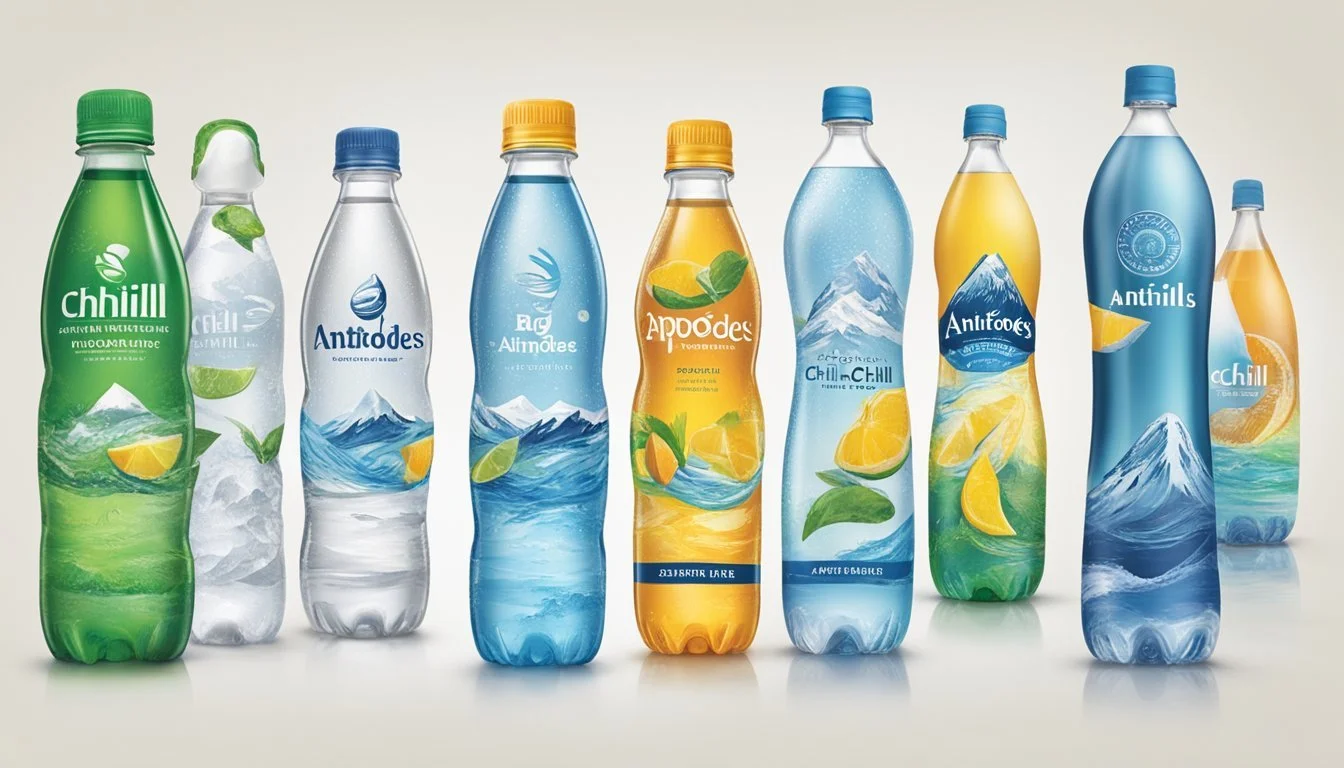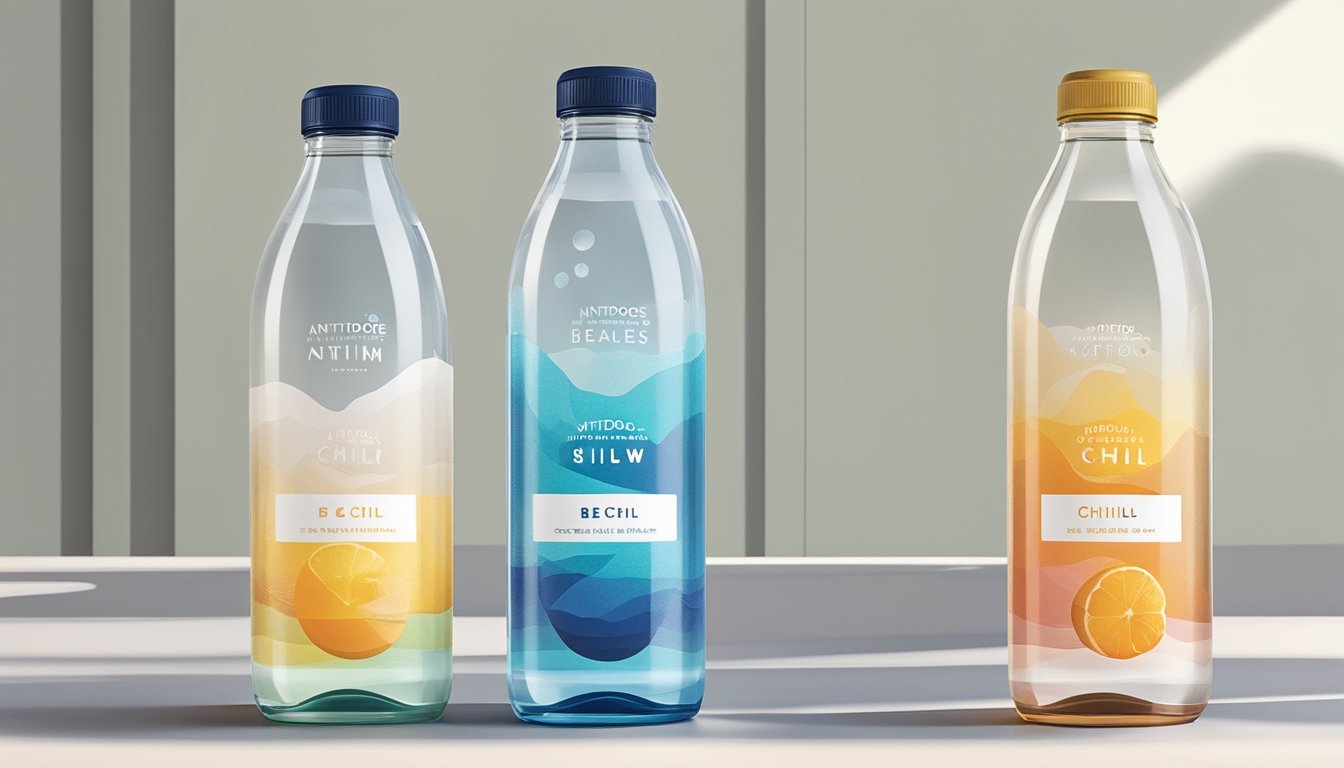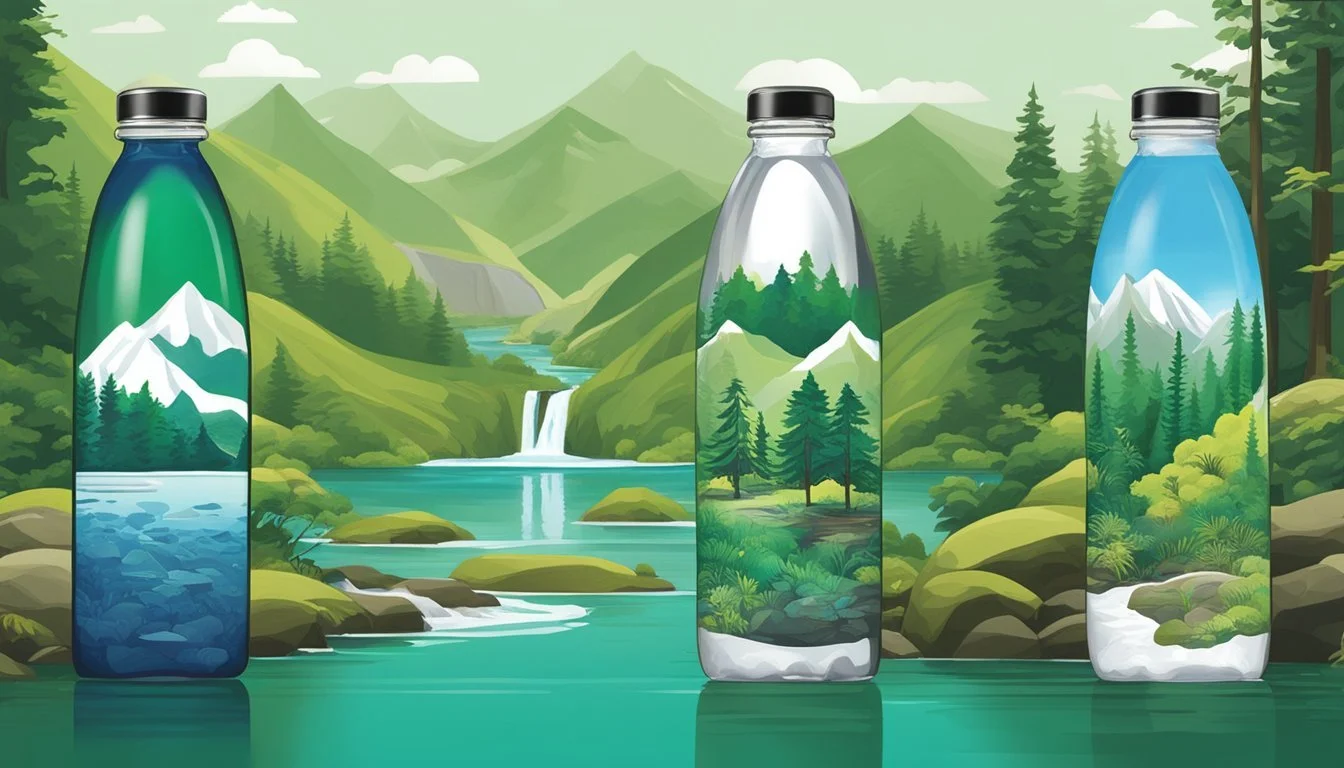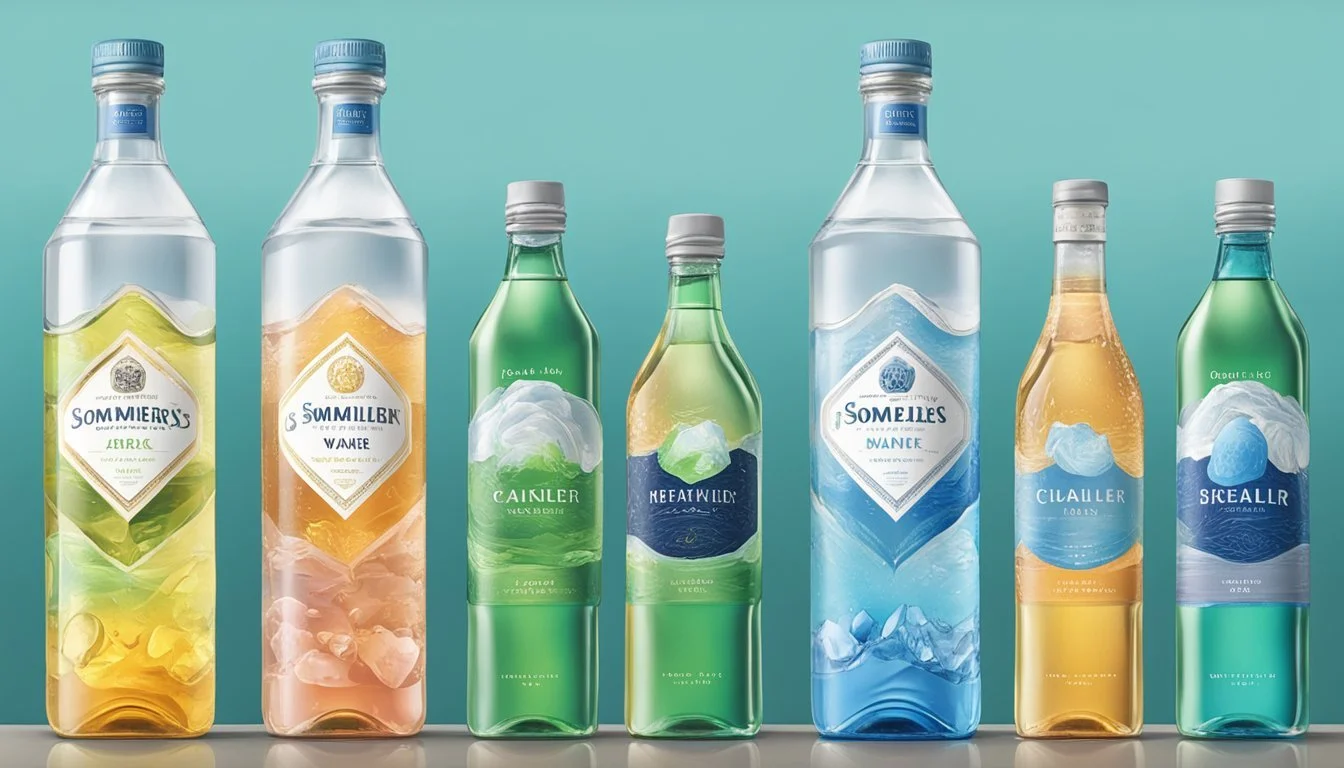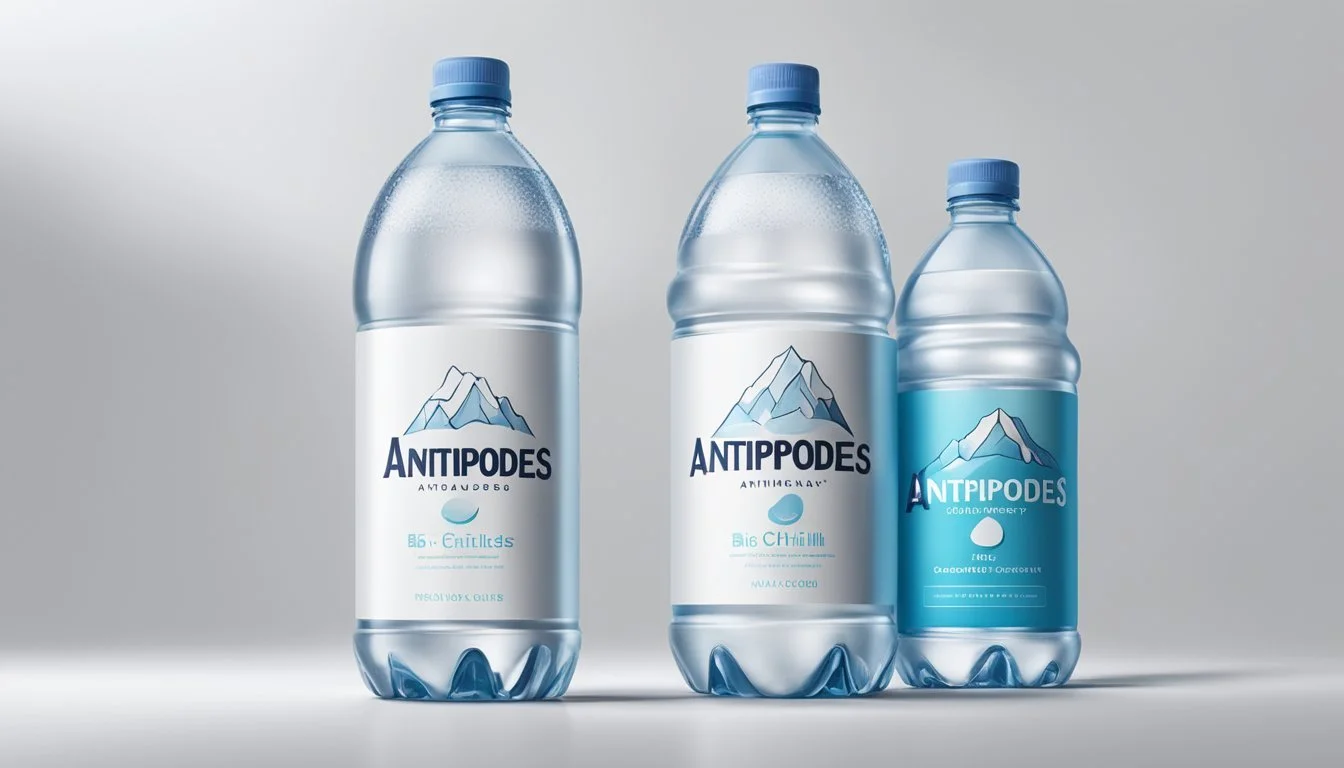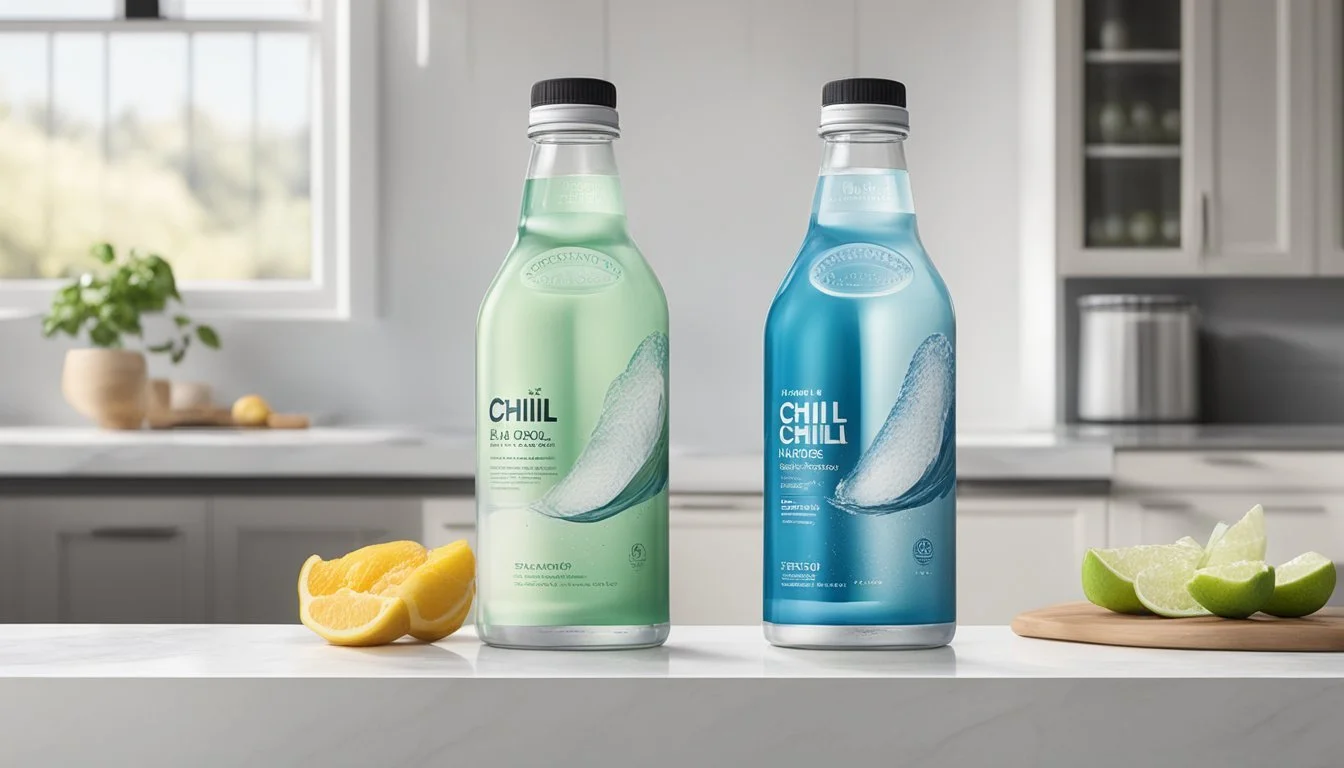Antipodes vs. Big Chill
A Comparative Analysis of Bottled Water Brands
Choosing the right bottled water can be a challenge given the myriad options available. When comparing Antipodes and Big Chill, it's essential to understand the unique qualities each brand brings to the table. Antipodes stands out with its pristine source from aquifers in New Zealand, renowned for its purity and high mineral content.
On the other hand, Big Chill offers a refreshing and crisp taste, sourced from carefully selected springs. Their emphasis on sustainability and eco-friendly packaging adds a compelling dimension for environmentally conscious consumers. While both brands maintain high standards of quality, each has distinct characteristics that cater to different preferences.
Readers will find valuable insights into how these two brands differ in taste, sourcing, and environmental impact. This comparison aims to provide clarity and assist in making an informed decision when choosing between Antipodes and Big Chill.
Overview of Bottled Water Markets
The bottled water market is a dynamic and rapidly growing sector within the global beverage industry. Understanding its dynamics and comparing brands like Antipodes and Big Chill will provide valuable insights.
Dynamics of the Bottled Water Industry
The bottled water market experienced significant growth, reaching a revenue of approximately $342 billion in 2023 globally. This market's expansion can be attributed to increasing health consciousness among consumers and the convenience of bottled water.
Grocery stores and retailers play a crucial role in distributing bottled water. The market includes a variety of water brands, each positioning itself uniquely through factors like mineral content, pH balance, and source.
Market trends also highlight a shift towards sustainable packaging and premium product offerings. Consumers often seek water bottles that are eco-friendly, which has led many brands to adopt recyclable or biodegradable materials.
Comparative Analysis of Antipodes and Big Chill
Antipodes and Big Chill cater to different segments within the bottled water market. Antipodes is known for its high-end positioning, often targeting a niche audience that values premium quality water with a balanced pH and superior taste.
Antipodes emphasizes its natural artesian source and minimal processing, appealing to health-conscious consumers. It is often found in upscale grocery stores and specialty shops.
In contrast, Big Chill positions itself as an affordable and accessible option for the mass market. This brand focuses on providing reliable, clean-tasting water without any frills. Big Chill appeals to a broad audience due to its widespread availability and cost-effectiveness.
Both brands reflect the diverse preferences and demands within the bottled water market, highlighting the importance of brand positioning and target audience in their strategies.
Source and Production Process
Antipodes and Big Chill have distinct approaches to sourcing and production that impact quality and taste.
Water Source and Origin
Antipodes sources its water from a protected artesian aquifer deep in New Zealand's Bay of Plenty. This natural spring water is famed for its purity and balanced mineral composition. The groundwater is naturally filtered through volcanic rock, resulting in a smooth and refreshing taste with a slight hint of natural minerals.
Big Chill, on the other hand, sources its water primarily from glacial meltwater in the Rocky Mountains. This source ensures a high-quality, pure water that retains important minerals. The glacial process imparts a unique, clean flavor to the water, making it a favorite among connoisseurs. The water is collected at high altitudes, preserving its pristine condition.
Filtration and Purification Techniques
Antipodes employs a rigorous filtration process that includes reverse osmosis and UV treatment. This not only removes impurities but also maintains the water's natural mineral content. The use of carbon filters further enhances the purity of the water, ensuring that no contaminants affect its taste or safety.
Big Chill utilizes a multi-stage filtration system. This process includes microfiltration and ozonation, ensuring that the water meets high safety and quality standards. The filtration techniques Big Chill uses help to retain the naturally occurring minerals from the glacial source, adding to the water's distinctive taste and health benefits. These thorough purification methods guarantee that each bottle of Big Chill is clean, crisp, and refreshing.
Health and Nutritional Information
When comparing Antipodes and Big Chill bottled waters, it’s essential to consider the health implications and nutritional facts associated with each brand.
Mineral Content and Health Benefits
Antipodes and Big Chill differ in their mineral content, which directly impacts their health benefits. Antipodes is known for higher levels of magnesium and calcium, essential for bone health and muscle function. It contains approximately 15 mg/L of calcium and 8 mg/L of magnesium, contributing to a balanced diet.
Big Chill, on the other hand, focuses on maintaining moderate levels of minerals. With sodium content at about 20 mg/L, it provides sufficient electrolytes without overwhelming the consumer's daily intake. Potassium levels in Big Chill are also noteworthy, supporting heart and kidney functions.
Safety and Quality Standards
Both Antipodes and Big Chill adhere to stringent safety standards to ensure the purity and safety of their bottled waters. They comply with the Environmental Protection Agency guidelines and undergo regular testing for contaminants.
Antipodes ensures its water is free from harmful substances like PFAS chemicals and other toxic contaminants. Big Chill employs advanced purification techniques to meet Safe Drinking Water standards, ensuring high safety levels. These brands are committed to delivering clean, safe, and reliable drinking water to consumers.
Environmental and Sustainability Considerations
When it comes to the environmental impact and sustainability of Antipodes and Big Chill bottled water, several key factors come into play. These include the materials used for packaging and the initiatives undertaken by each brand to promote eco-friendliness.
Environmental Impact of Plastic Bottles
Plastic bottles contribute significantly to environmental degradation. Antipodes uses glass bottles which are more environmentally friendly compared to plastic. Glass is recyclable and does not leach harmful chemicals into the water.
On the flip side, Big Chill uses plastic bottles. Plastic requires significant energy to produce and contributes to waste. However, high-quality plastic bottles like those used by Big Chill can be reused multiple times before recycling.
The Environmental Working Group (EWG) highlights that producing plastic bottles depletes natural resources and generates substantial carbon emissions. The life cycle of plastic includes energy-intensive manufacturing and challenges in widespread recycling.
Initiatives Toward Sustainability
Antipodes takes several steps to minimize its environmental footprint. The brand emphasizes the use of recyclable glass, reducing reliance on single-use plastics. Moreover, Antipodes has committed to carbon-neutral production processes, aiming to balance out their environmental impact.
Big Chill focuses on improving the sustainability of their plastic packaging. They incorporate post-consumer recycled (PCR) plastic into their bottles, helping reduce the need for virgin plastic. Additionally, the brand promotes initiatives for recycling and encourages consumers to reuse bottles where possible.
Both brands engage in programs that support environmental conservation and sustainability education, aiming to raise awareness about the importance of reducing waste and choosing eco-friendly packaging options.
Taste Profile and Water Sommelier Insights
Antipodes and Big Chill offer distinct taste profiles that cater to different preferences. Insights from water sommeliers highlight key attributes and differences in their flavor characteristics.
Flavor Characteristics and Palate
Antipodes: Antipodes water is recognized for its smooth, clean taste, with a slight mineral undertone. The water boasts low total dissolved solids (TDS), resulting in a subtle, refreshing flavor. It is often described as having a silky mouthfeel, making it enjoyable for consumers who prefer a more delicate water taste.
Big Chill: Big Chill, on the other hand, has a more pronounced mineral taste due to its higher TDS. Its flavor profile includes a hint of alkalinity which some drinkers find appealing for its crisp and invigorating quality. The mouthfeel is slightly heavier compared to Antipodes, given its richer mineral content.
Comparison by Renowned Water Sommeliers
Water sommeliers have noted that Antipodes predominantly appeals to those who enjoy a more refined and neutral taste. This makes it suitable for pairing with fine dining, where the water's subtlety complements rather than overwhelms.
Big Chill is favored for its distinct and robust mineral taste. Sommeliers often recommend it for those who prefer waters with a noticeable character and a crisp finish. It's often suggested that Big Chill be consumed at room temperature to fully appreciate its mineral complexity without the interference of numbing caused by ice.
These insights highlight that the preference between Antipodes and Big Chill largely depends on individual taste and the context in which the water is consumed.
Packaging and Branding Strategies
Packaging and branding are crucial elements that differentiate Antipodes and Big Chill in the competitive bottled water market. These components influence both the environmental impact and customer perception.
Design and Material Choices
Antipodes features a glass bottle design, emphasizing luxury and environmental responsibility. The elegant glass packaging is BPA-free and showcases a minimalist aesthetic that appeals to premium consumers. Glass is both aesthetically pleasing and recyclable, positioning Antipodes as an eco-friendly choice.
Big Chill, in contrast, opts for plastic bottles. They utilize high-quality BPA-free plastic to ensure safety. Although not as luxurious as glass, plastic is lightweight and more convenient for on-the-go consumption. This makes Big Chill more accessible to a broader audience.
Smartwater and Dasani also use plastic but focus on sleek, modern designs. Nestlé Pure Life, while often criticized for its average quality, offers plastic packaging that aims for affordability and mass distribution.
Market Positioning and Customer Perception
Antipodes leverages its premium glass packaging to cultivate a high-end brand image. Positioned as a luxury item, it attracts eco-conscious consumers willing to pay a premium. The brand's elegant design and environmental messaging foster strong customer loyalty among upscale markets.
Big Chill's use of plastic allows it to be more cost-effective, appealing to a wider demographic. It often markets itself as an affordable yet quality bottled water option. This strategy helps Big Chill maintain a solid presence in the market without the high price tag.
Brands like Smartwater position themselves as modern and health-focused, using sleek designs to attract health-conscious individuals. Dasani targets mainstream consumers with its practical, everyday-use image. Nestlé Pure Life, while less distinguished in brand loyalty, often relies on widespread availability and affordability.
These packaging and branding strategies are pivotal in shaping how consumers perceive and choose between bottled water brands like Antipodes and Big Chill. The distinct approaches highlight each brand's strengths and market goals.
Cost Comparisons
Antipodes and Big Chill present distinct cost structures, impacting their value for money and purchasing options. Price points and the availability of subscription services are pivotal in determining their cost-effectiveness.
Price Points and Value
Antipodes is positioned in the premium segment, similar to brands like Essentia and Voss. A single 1-liter bottle typically ranges from $3 to $5. This higher price point reflects its origin from New Zealand's pristine aquifers and its glass bottle packaging, which appeals to environmentally conscious consumers.
In contrast, Big Chill offers a more economical choice, akin to Aquafina. Priced between $1 to $2 per liter, it is widely regarded for its affordability, making it a frequent choice in grocery stores. The lower cost does not necessarily compromise quality, but it does position Big Chill as a value-for-money option.
Bulk Purchasing and Subscription Services
Antipodes caters to consumers looking for convenience and cost savings through bulk purchasing and subscription plans. Subscription models offer discounts, bringing the price down closer to $2.50 per bottle when ordered in bulk. These services emphasize economies of scale, making it more cost-effective for regular consumers.
Big Chill, while already inexpensive, further enhances accessibility via bulk purchases. It is commonly found in large packages in mainstream grocery stores. Subscription services for Big Chill focus on high volume at low cost, often including free delivery. This model supports substantial savings, particularly for larger households or office settings.
Consumer Opinions and Reviews
Antipodes and Big Chill have garnered varied feedback from consumers and experts, each bringing their unique qualities to the table.
Customer Testimonials
Consumer feedback shows that Antipodes is highly praised for its smooth taste and premium feel. Customers appreciate the elegant glass bottle, which many believe enhances the water's purity and flavor. On social media, countless posts describe Antipodes as refreshing with no plastic aftertaste, contributing to strong brand loyalty.
Conversely, Big Chill receives positive reviews for its accessibility and affordability. Many users praise its consistent quality and refreshing taste. However, some customers mention a slight aftertaste, particularly when compared to higher-end brands like Antipodes. Despite this, the convenience and price point make Big Chill a favorite among budget-conscious consumers.
Expert Ratings and Endorsements
Antipodes has received accolades from numerous industry experts. It is often recommended by sommeliers and chefs for its clean, neutral taste, which is said to complement fine dining. The brand also boasts several water industry awards, attesting to its superior quality and purity.
Big Chill, while not as decorated as Antipodes, holds its own in expert circles. Known for its consistent and reliable hydration, it has been endorsed by several fitness experts and health bloggers. Its broad availability makes it a practical choice for everyday use, earning it recognition even if it lacks the high-end endorsements of its competitor.
Both brands have their unique merits, and the choice between them often comes down to individual preferences and priorities.
Final Recommendations
When choosing between Antipodes and Big Chill, consumers must consider taste, pH levels, and mineral content.
Antipodes offers a smooth, subtly mineralized taste with no aftertastes. It boasts a balanced pH level suitable for daily consumption. The mineral content includes moderate levels of essential minerals, making it a good option for maintaining daily hydration.
Big Chill provides a neutral taste profile, catering to those who prefer no distinct mineral flavors. It also registers a pH level close to neutral, ensuring that it suits a wide range of preferences. However, it does not highlight any specific mineral content.
Best Practices
Hydration Needs: Ensure the choice aligns with daily hydration goals.
Mineral Intake: Consider the mineral profile if you have specific dietary requirements.
Consumer Advice
Personal Taste: Tasting different samples can help determine personal preference.
Consult Health: Those with specific health conditions should consult with a healthcare provider.
Purchase Decision
Antipodes is ideal for those who appreciate a smoother, more refined taste with balanced minerals.
Big Chill appeals to individuals preferring a neutral taste and straightforward hydration.


